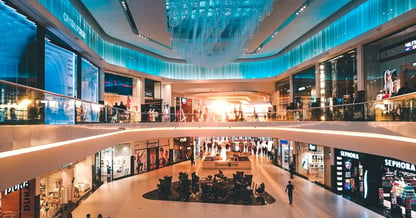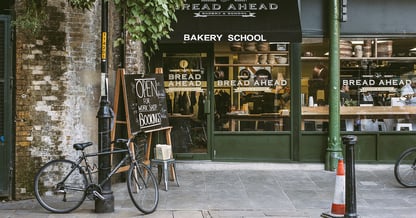
Retail Analytics: How to Do More With Your Data | WiFi SPARK
To compete with the rise of online shopping, physical retailers need to harness data in the same way as their eCommerce rivals. Utilising retail analytics and...
Read more
3 minute read | 15/01/2020

Online retailers track all kinds of analytics that tell them exactly how many people visit their websites and which of them leave without making a purchase. This valuable data shapes future business decisions with the aim of increasing conversions and ROI.
Physical retailers need to be doing the exact same thing. Here’s why and how they can do it.
Conversion is a vital part of analytics for retailers. It’s important to track and understand all of the important figures that are associated with a store because numbers don’t lie. They provide answers to difficult questions and should be the basis for major business decisions in the future.
Conversion rates provide insight into the overall performance of a particular store. Although it’s useful to know how many passersby are enticed through its doors, conversion figures show us how many of those people actually parted with their hard-earned cash.
Together with footfall data and other analytics, you can highlight how successful stores are currently performing and identify missed sales opportunities.
Fortunately, the actual calculation for conversion rates is simple and straightforward.
Divide the number of transactions that are made within any given period of time with the footfall in the store during the same period and then times that number by 100.
So, let’s say 200 people were in a store during a four-hour period but only 25 of them bought anything. That’s:
25 / 200 x 100 = 12.5%
So for those four hours, the store saw a conversion rate of 12.5%. Simple.
When calculating conversion rates, it’s better to break the figures down into small time periods. All stores have busy days and quiet days, but the two can warp results of the other. A couple of very good days shouldn’t paper over the cracks of five worryingly quiet ones (and vice-versa).
Once you’ve calculated the figures for a typical week, the next step is analysis and decision-making. What are the numbers telling you? It could be that a lot of people are entering your store but leaving without making a purchase. Or, they might indicate that footfall is very low but the people that do come in always find what they’re looking for.
Whatever the results, use them to implement improvements and then measure again in the future to see if your tinkering has had the desired effect.
A key part of the conversion rate equation is measuring the number of people in a store at any given moment. This doesn’t mean sitting very still for a few hours keeping a tally as people come and go. It might not be a metric you’re currently tracking but it can make a big impact on a business.
Knowing high footfall areas allows a business to maximise the placement of its products. Place promotional items in an area that has a high volume of traffic to boost sales and really get the most from each customer.
It’s also a great way of knowing exactly when a store is at its busiest so that stock can be replenished and there’s enough staff available that day to be able to cope.
Monitoring footfall is possible with WiFi SPARK’s innovative solution. As well as offering free WiFi, you can analyse their shopping behaviour and calculate how many people pass by, enter and how long they spend in a store. This is the ‘funnel of interest’ and it measures how many people actually entered the store in comparison to those who didn’t.
With our platform, a store can measure footfall and then its conversion rates as a result - all via the WiFi. Track how many people are entering, where they go, how long they stay with you and whether or not they make a purchase for the best possible understanding of a business’ performance.
Then, make proactive changes to the layout, products and customer experience and see how the numbers react. It might take a little trial and error but you’ll find that you start to see tangible improvements and increased ROI.
Conversion rates and data analytics are just two innovative ways that retailers can improve customer experience and thrive. Successfully competing against online shopping is a subject we cover in one of our latest guides.
Download our free guide now by using the link below. It examines some of the key challenges that retailers are facing and considers how technology is being used to overcome these obstacles.
Get your copy now, embrace innovation and ensure your bricks-and-mortar stores thrive.
Rebecca is the Marketing Director. She's worked for SPARK TSL since 2012. She is responsible for high level marketing strategy focusing on lead generation and aiding the vision of the business; to ensure that no patient has to pay for entertainment.
More articles by the author

To compete with the rise of online shopping, physical retailers need to harness data in the same way as their eCommerce rivals. Utilising retail analytics and...
Read more

Smart retail gives consumers the best possible experience while shopping by utilising innovative smart technologies. Retailers can use this tech to enhance...
Read more

A town centre regeneration strategy gives high streets what they need to emerge victorious over the economic, social and physical decay they’re susceptible to....
Read more